AMD Ryzen 5 3600 Review: Non-X Marks the Spot
Why you can trust Tom's Hardware
Web Browser
Browsers tend to be impacted more by the recent security mitigations than other types of applications, so Intel has taken a haircut in these benchmarks of fully-patched systems.

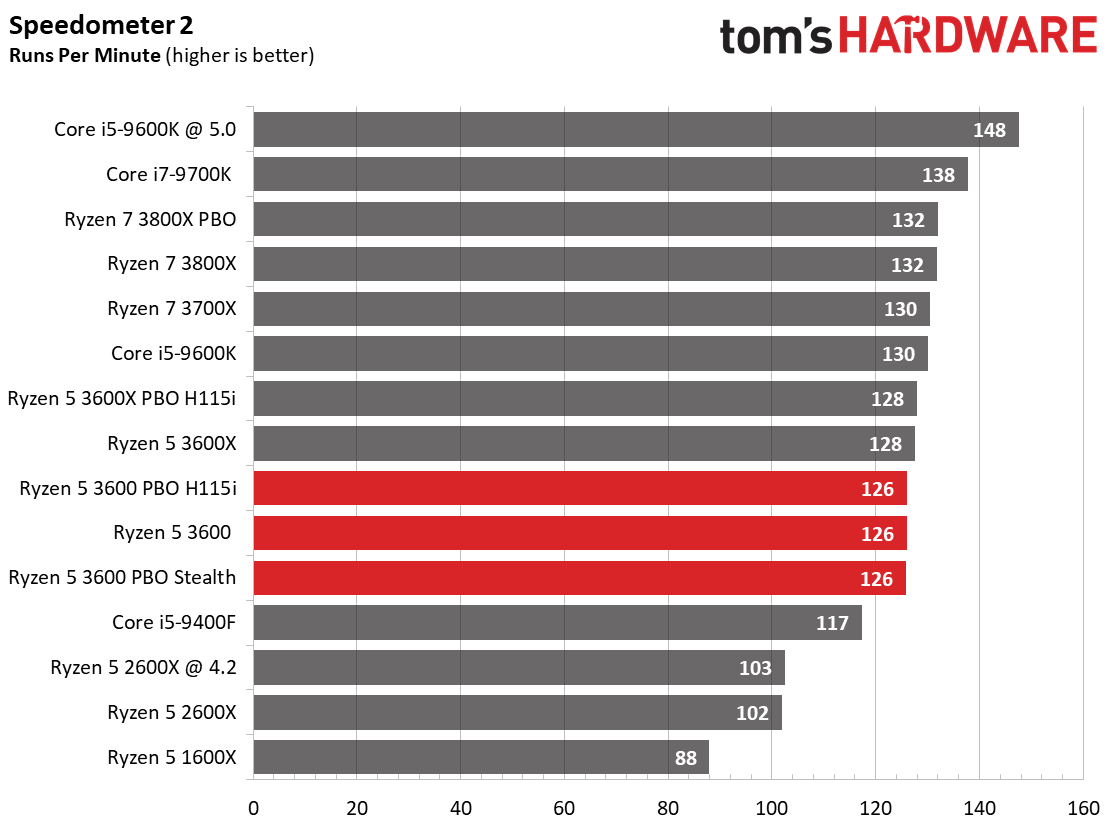
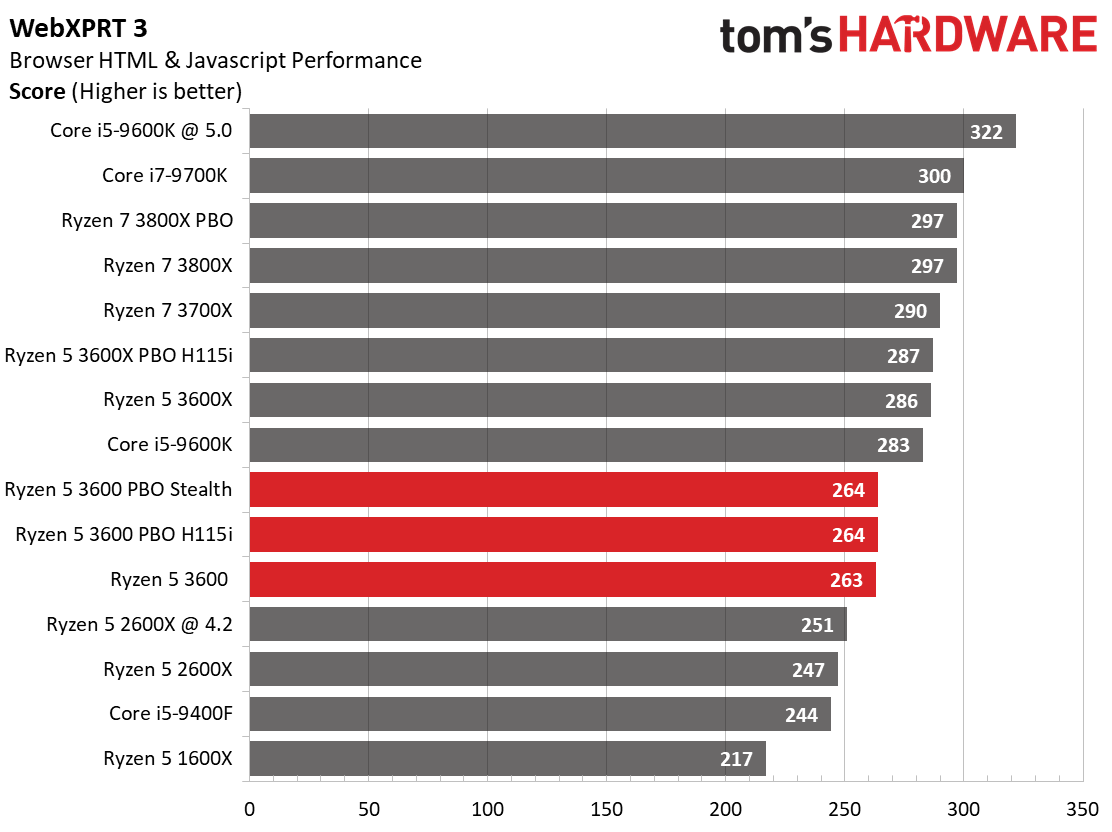
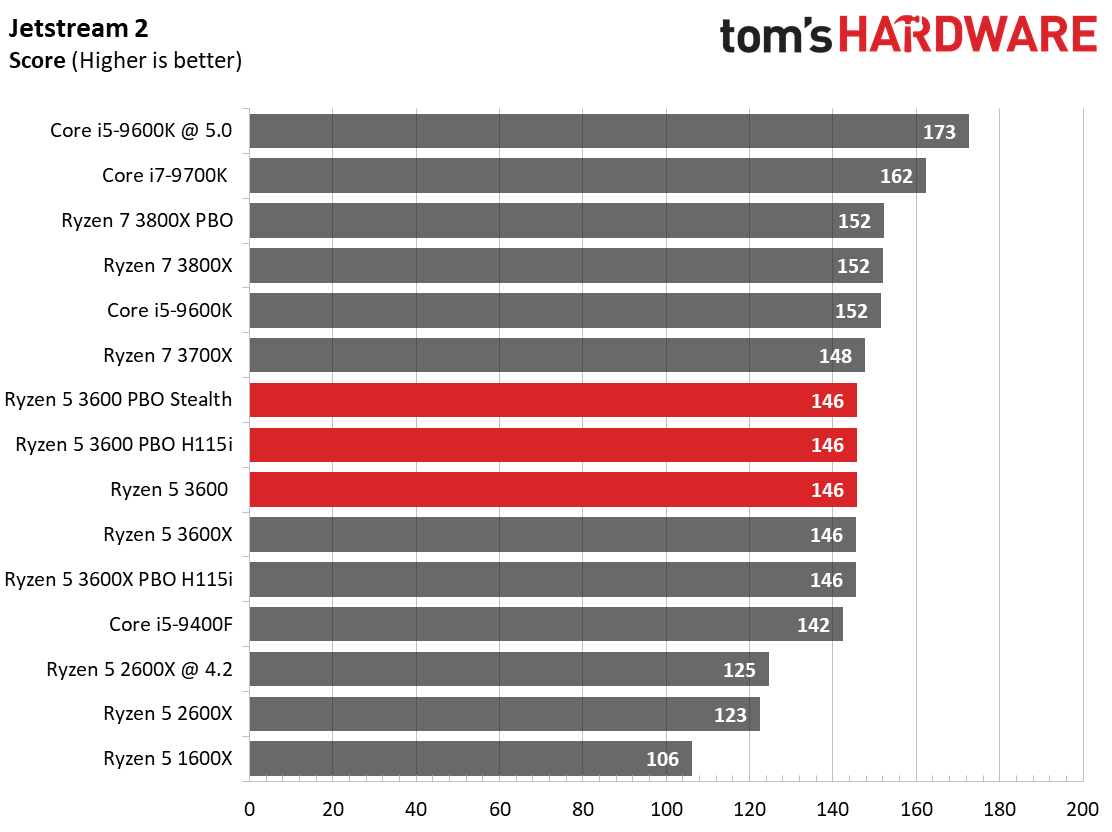
The ARES-6 web browser benchmark focuses on the latest and greatest JavaScript features, with a heavy focus on forward neural networks used for machine learning tasks, and browser responsiveness. The 3600 profits from AMD's diligent work on improving IPC with the Zen 2 microarchitecture. Intel's faster processors exploit the company's frequency advantage, which equates to higher per-core performance, but the Core i5-9400F's lower base and boost clocks trail the Ryzen 5 3600.
We such much of the same with Speedometer 2 and Jetstream 2, with the Ryzen 5 3600 opening up a wider gap between itself and the -9400F. WebXRPT 3 puts the cap on the 3600's full sweep of the -9400F.
You'll notice that overclocking the Ryzen processors doesn't yield any improvement. That's because the processor is still limited to its maximum single-core boost speed during these lightly-threaded tasks.
Microsoft Office
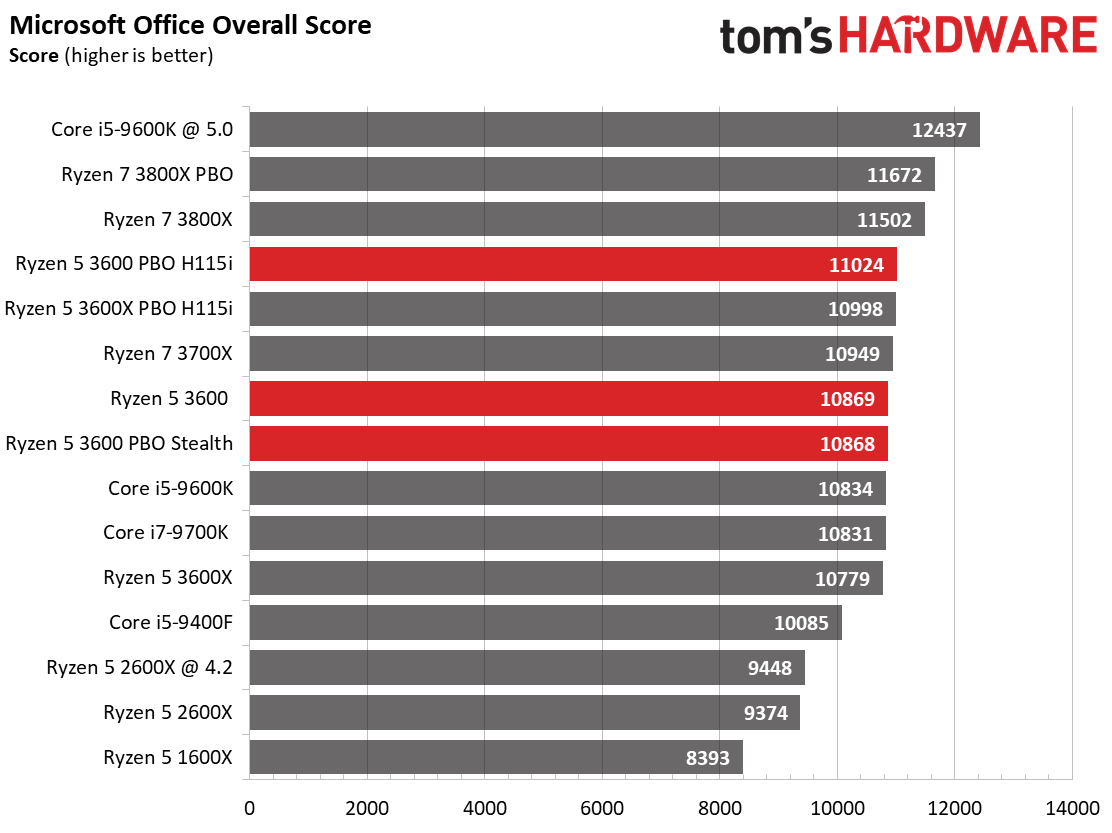
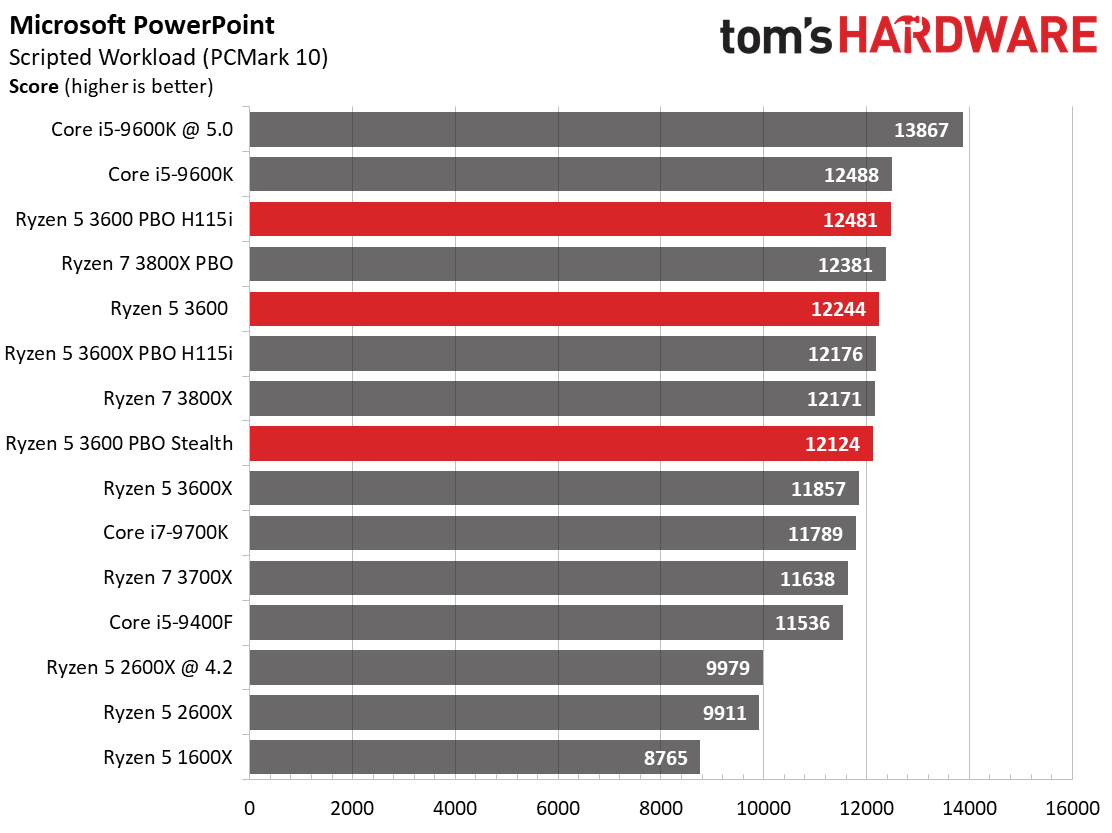
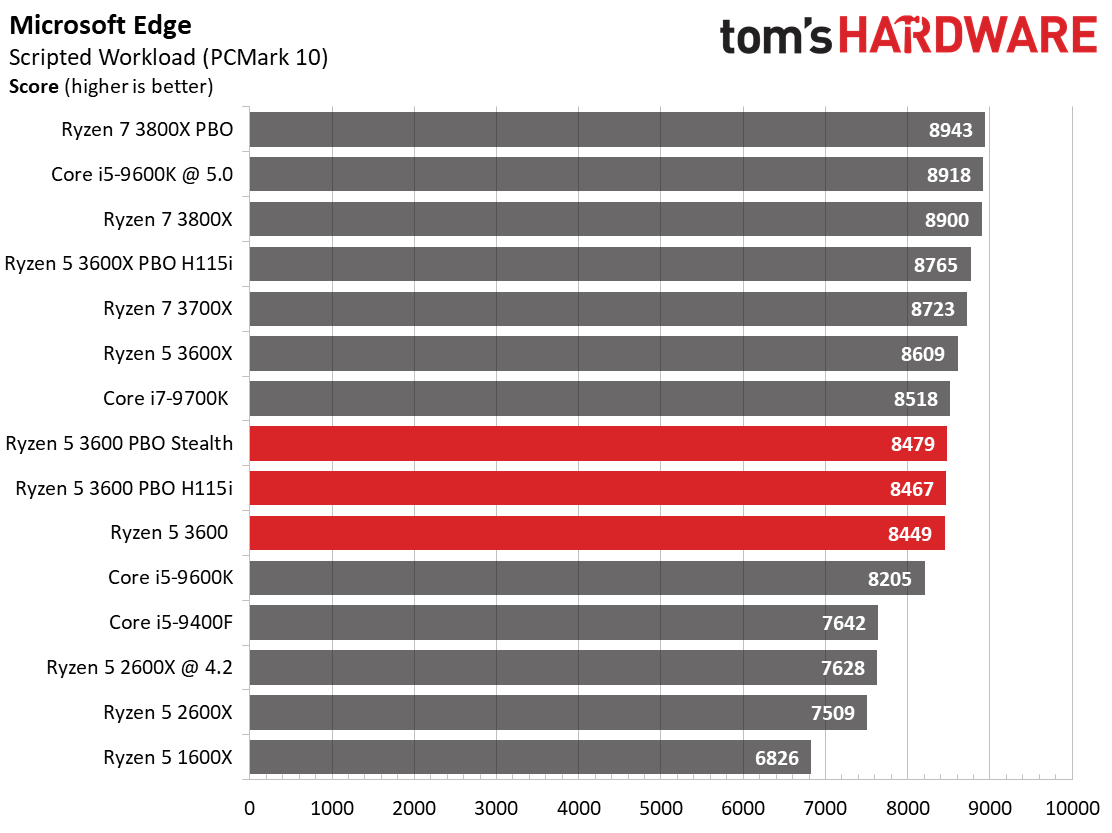
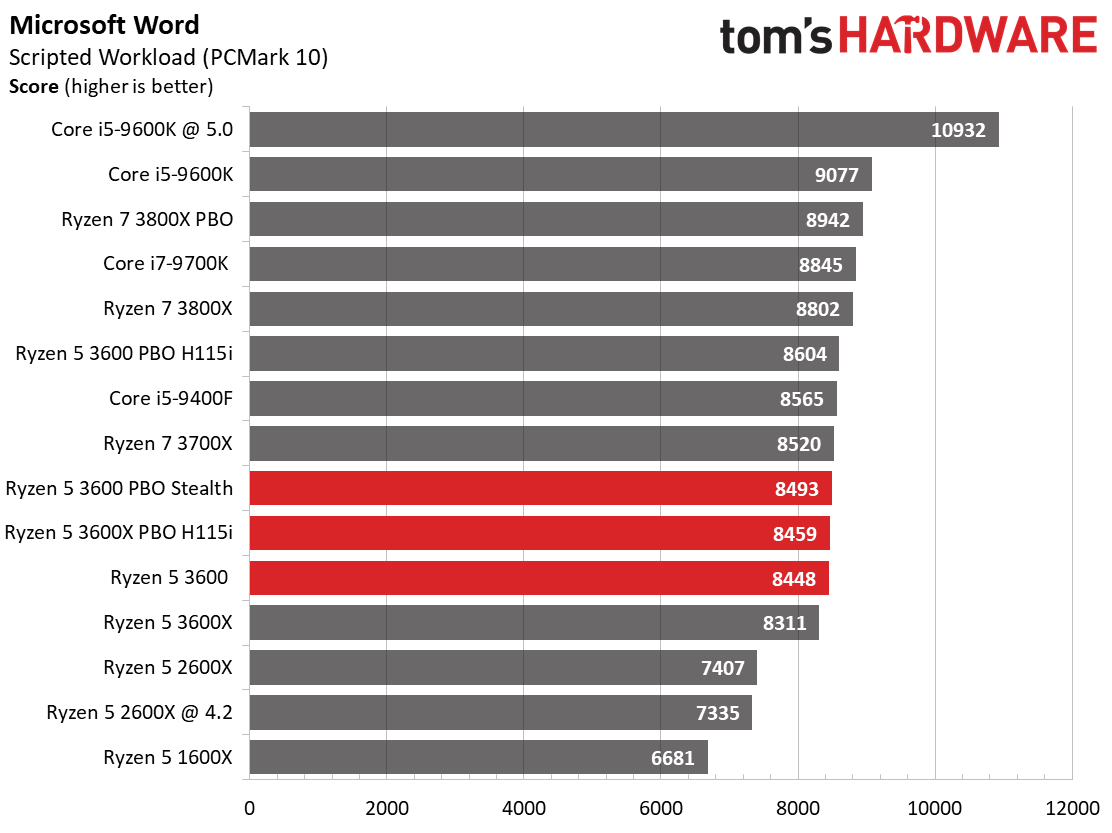
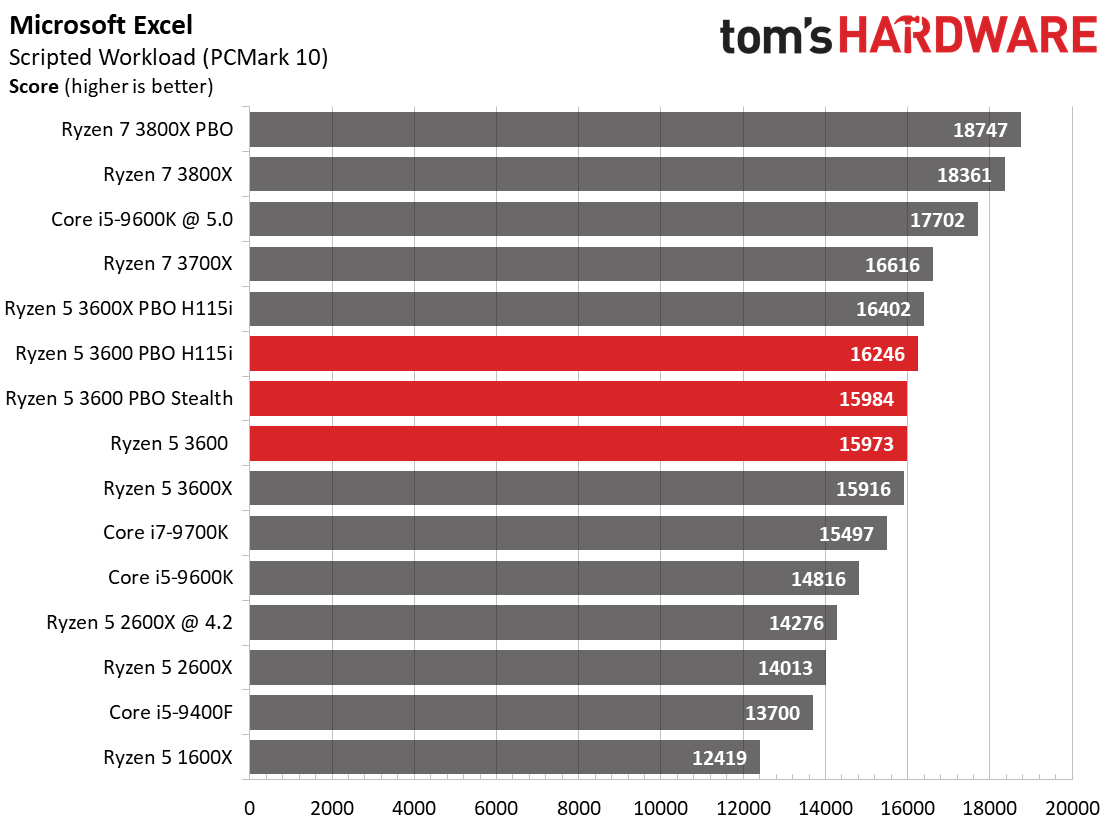
The Microsoft Office suite of benchmarks runs via PCMark 10's new application test. This benchmark tests with real Microsoft Office applications, and we can see that the Ryzen 3000 series processors are very competitive in Excel, the Edge browser, and Word.
The Ryzen 5 3600 proves to be an agile performer in these common applications, even beating the speedy Core i7-9700K and i5-9600K in the overall score. We see some gains via overclocking Ryzen chips, and although the gains aren't as pronounced in these applications, the 3600 lands in a virtual tie with the Ryzen 5 3600X.
Productivity
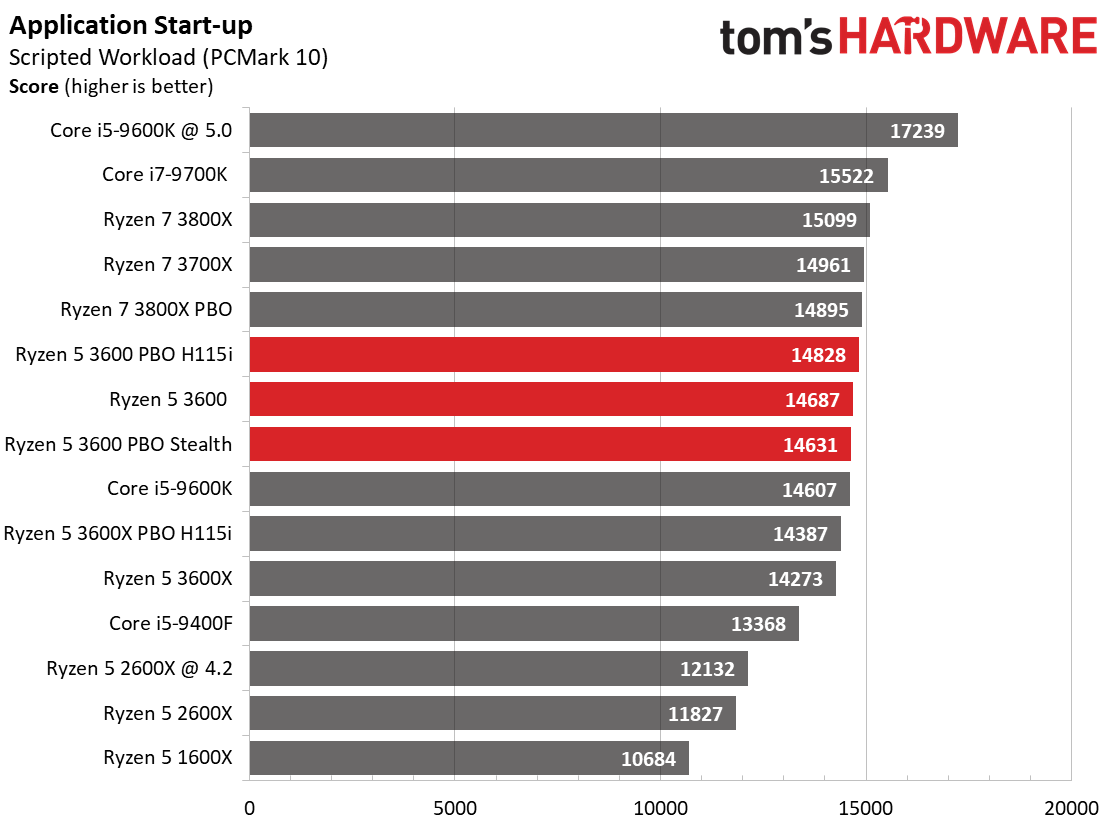
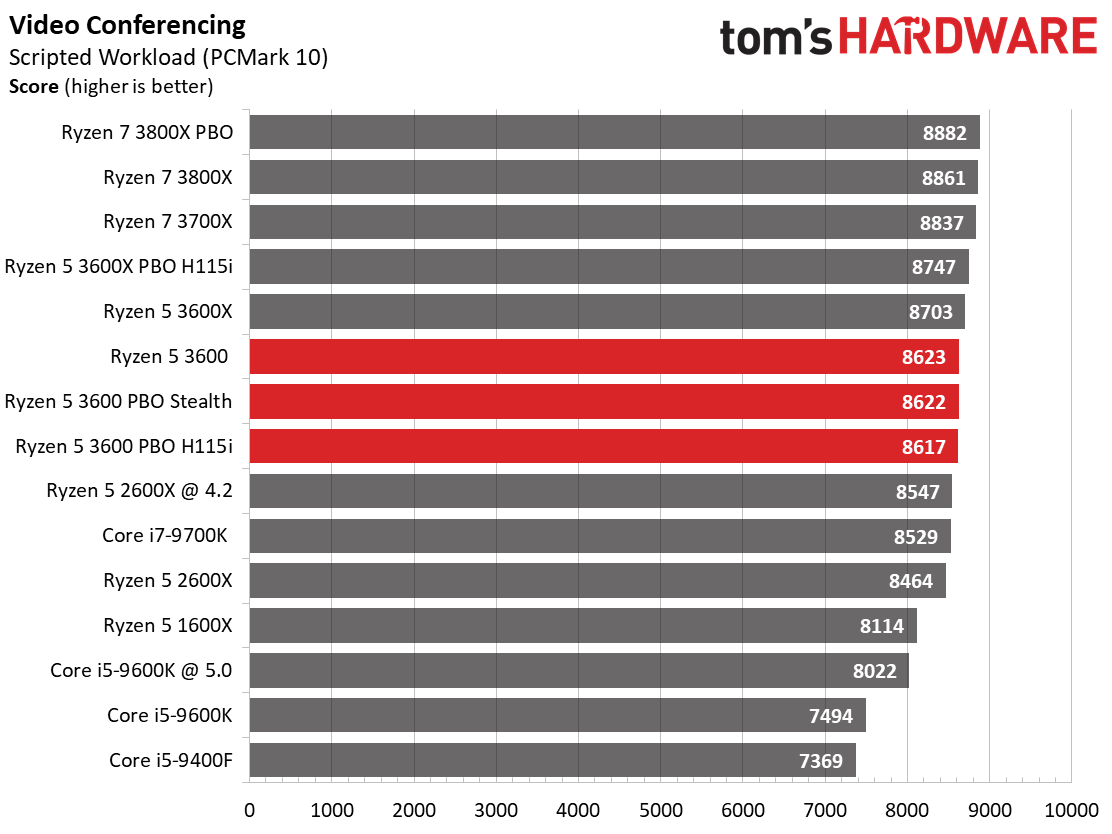
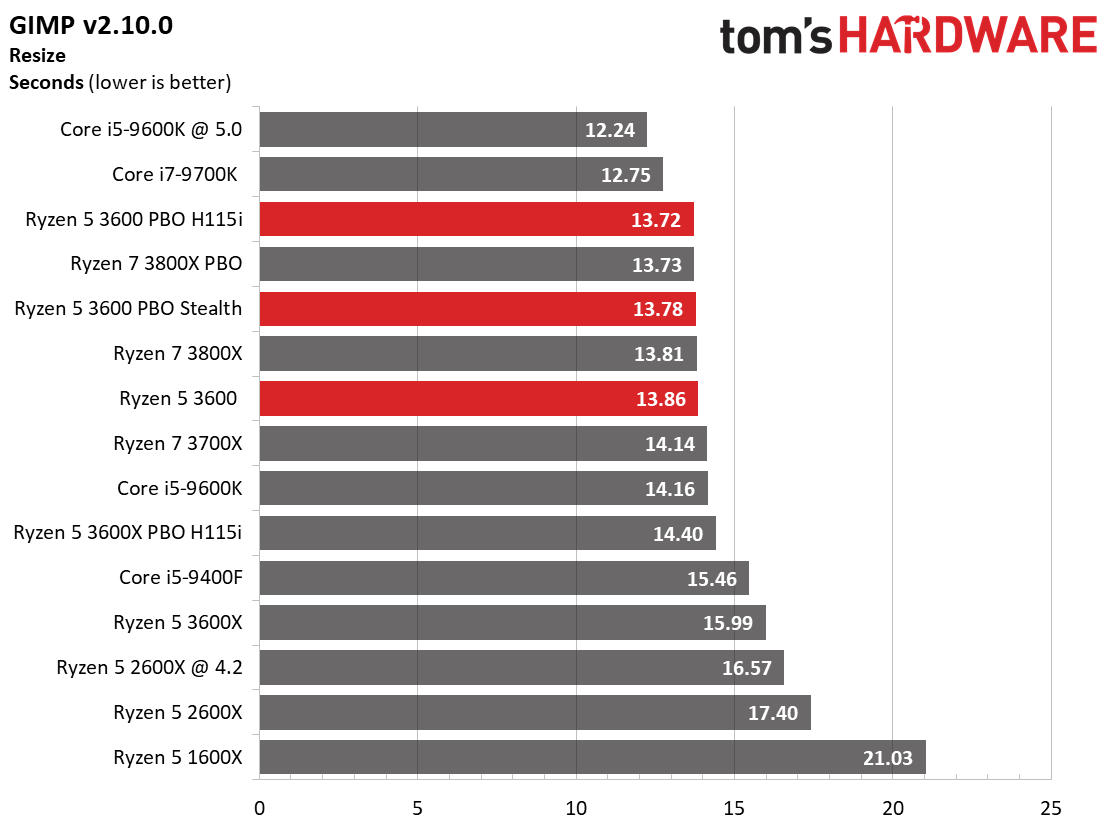

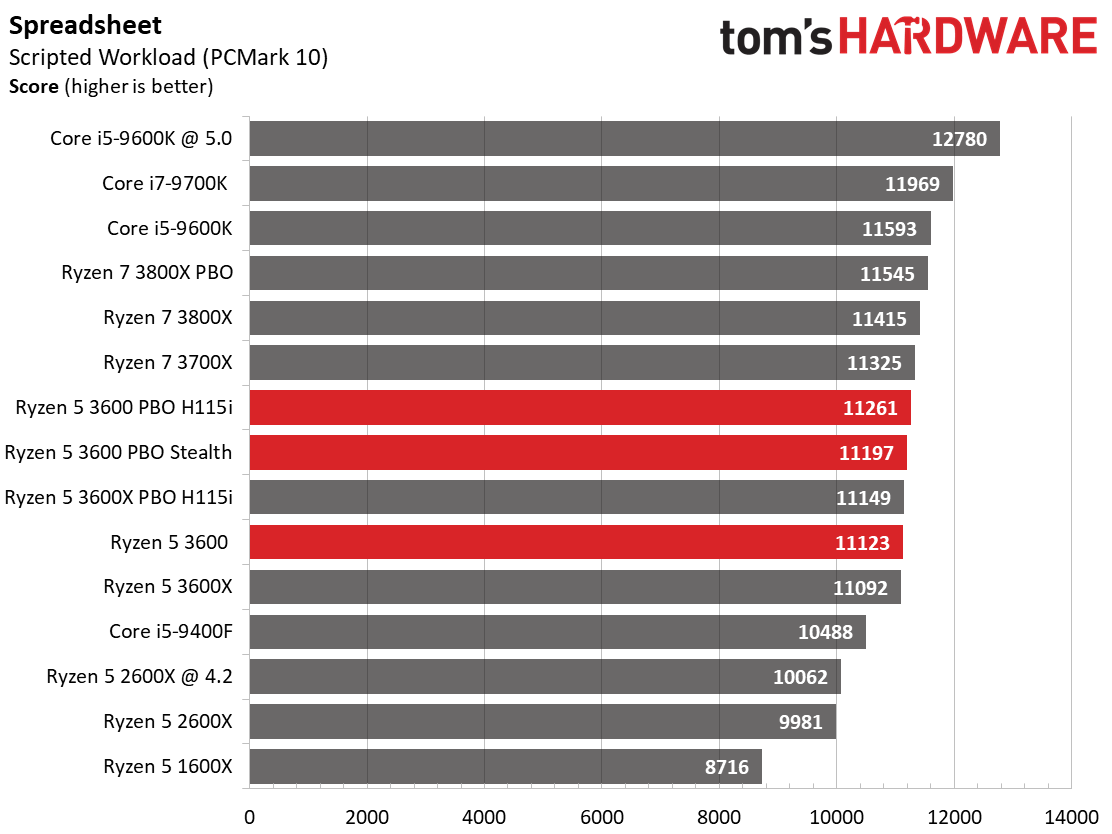

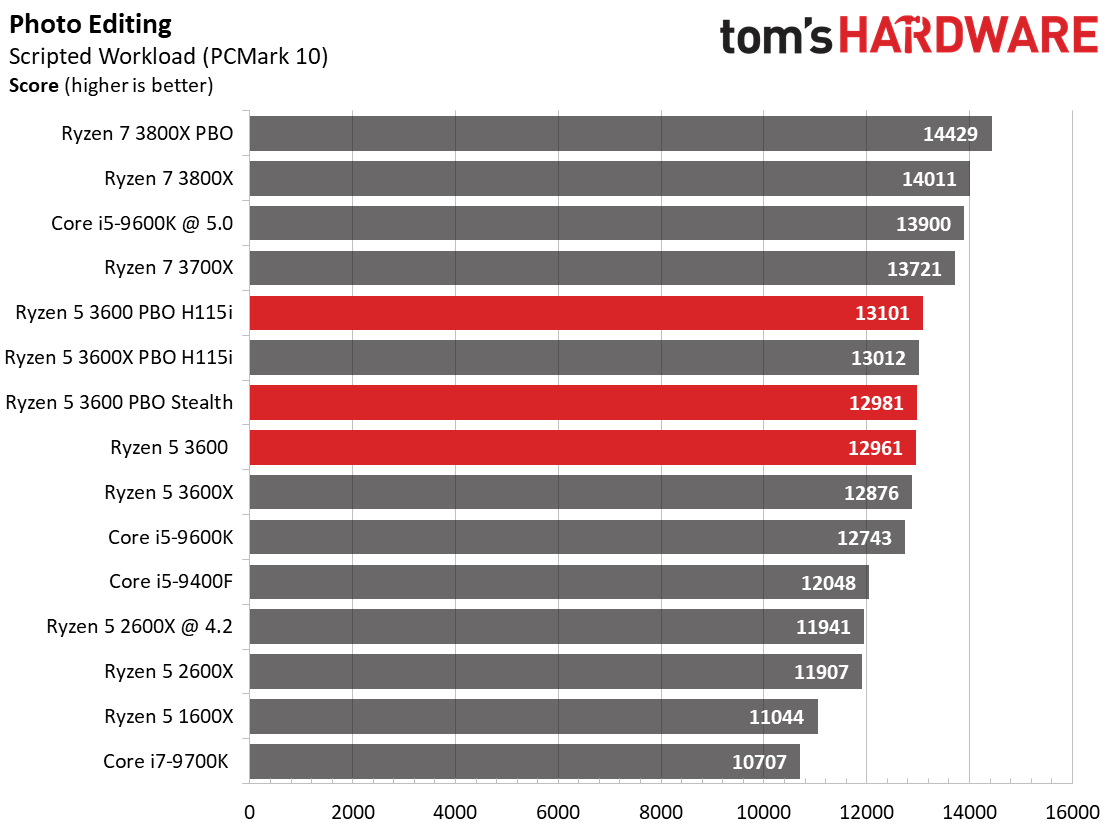
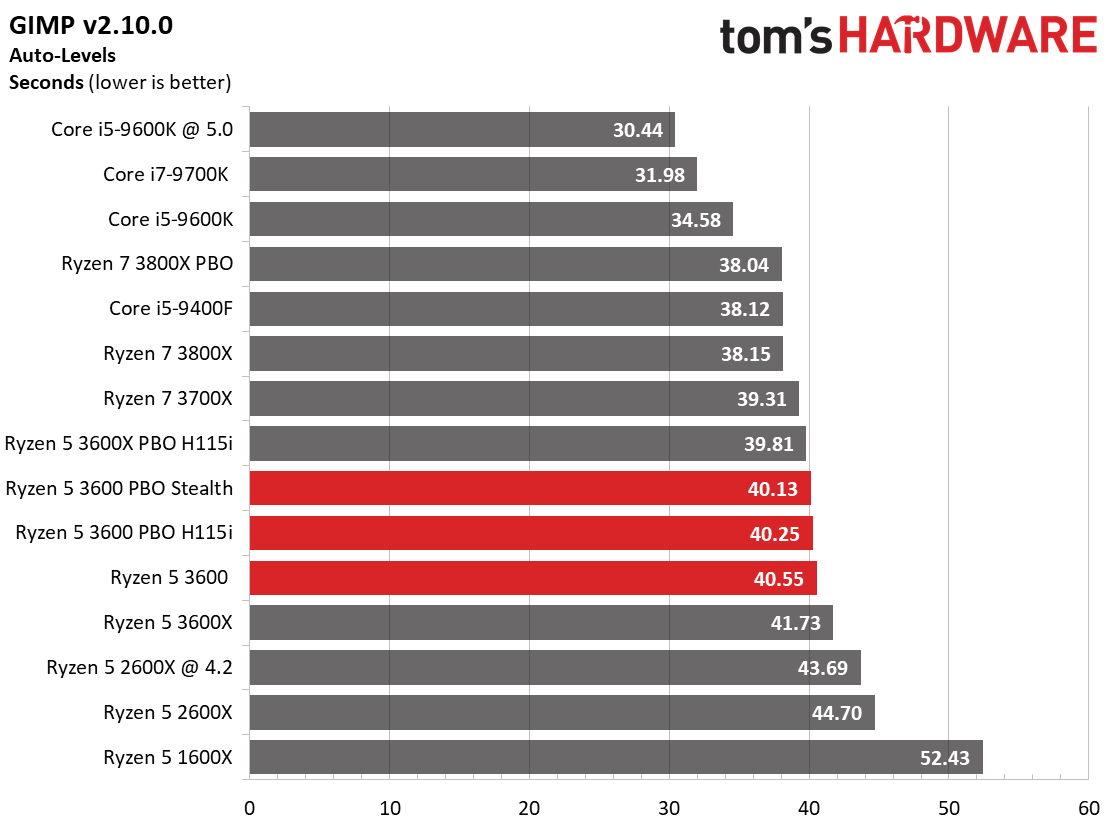
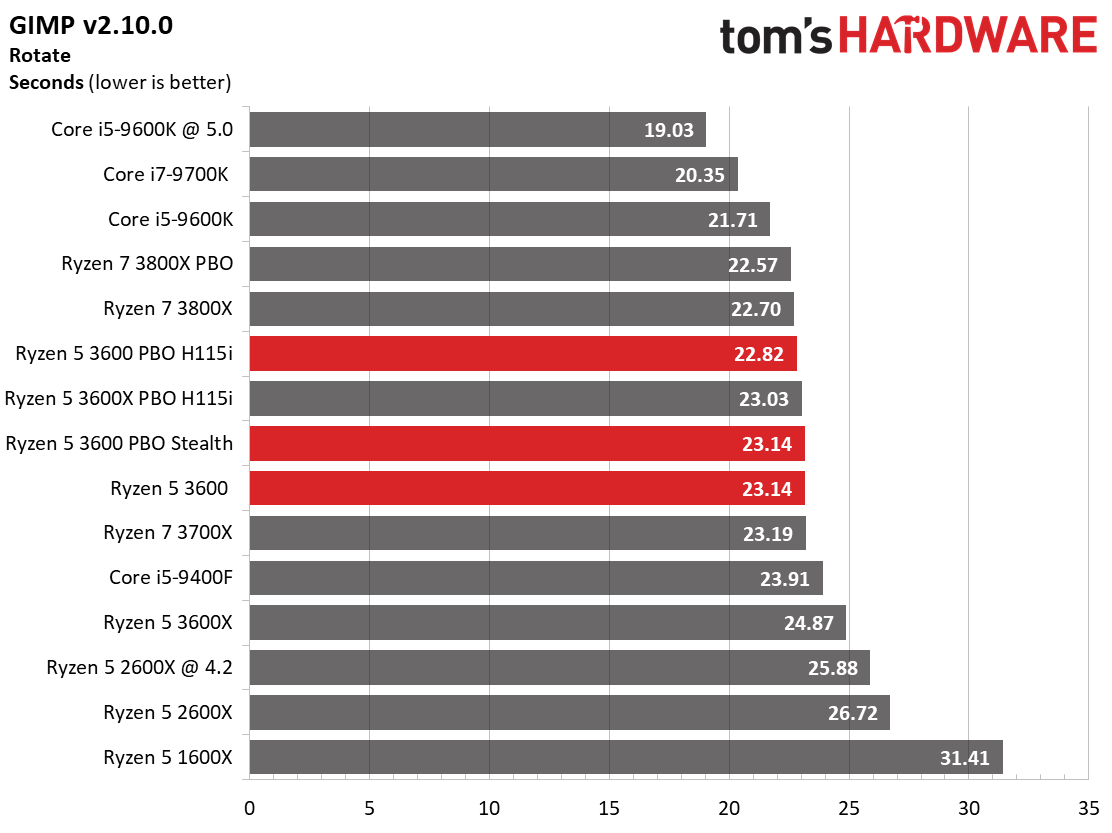
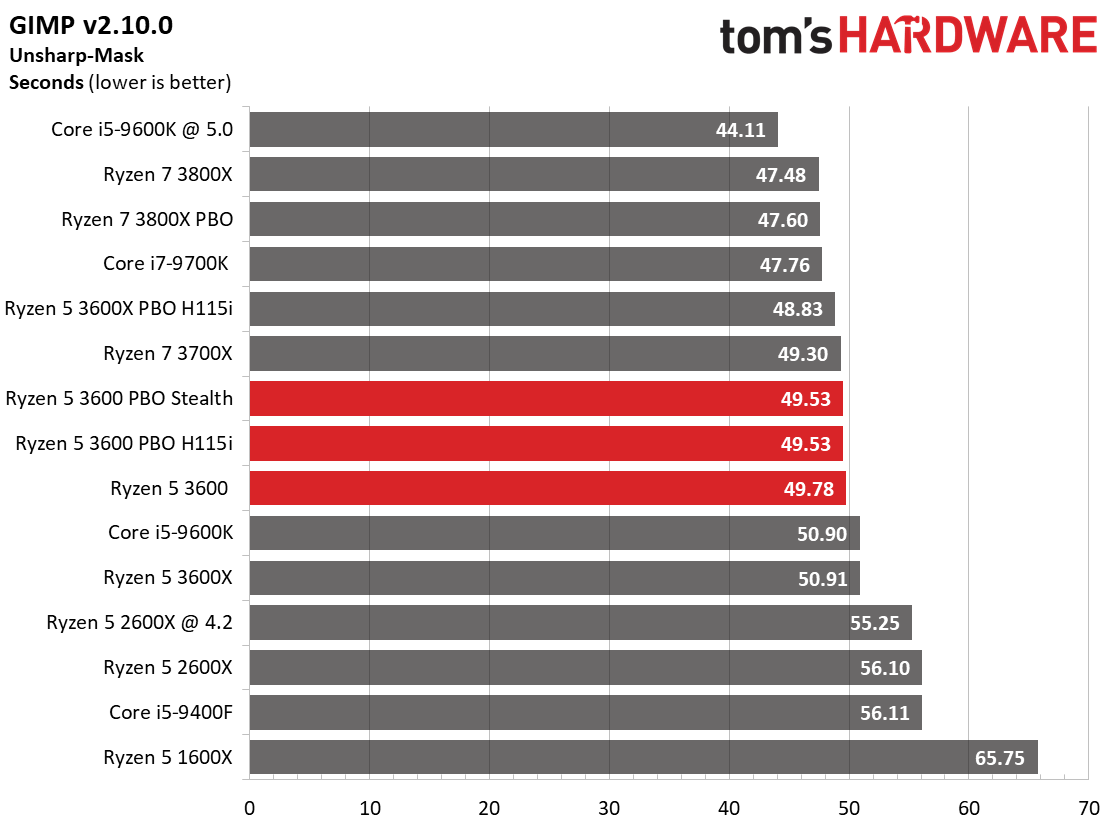
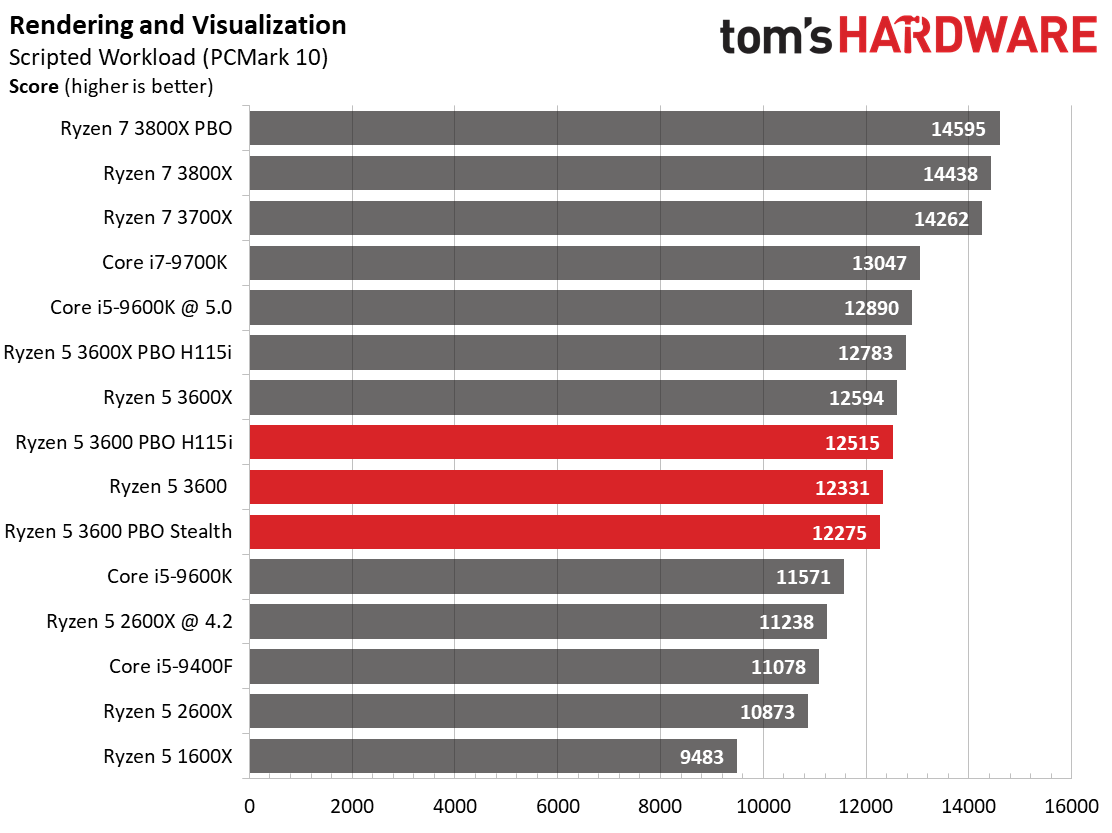
The LLVM compiler benefits from extra threads, handing the 3600 an easy lead over the competing Intel chips, even after overclocking. The Core i5-9400F even trails the first-gen Ryzen 5 1600X, highlighting how much Intel's feature-trimming (in this case, Hyper-Threading) hamstrings its lineup against AMD's more well-rounded chips.
Get Tom's Hardware's best news and in-depth reviews, straight to your inbox.
The application start-up metric measures load time snappiness in word processors, GIMP, and Web browsers under warm- and cold-start conditions. Other platform-level considerations affect this test as well, including the storage subsystem. The Ryzen 5 3600 actually loses a little performance when we kick on PBO with the Wraith Stealth cooler, but the result lands within the expected 3% variance of this test, implying there is no uplift from overclocking in some applications with the stock cooler. We see this trend repeat a few times throughout our test suite. In any case, the Ryzen 5 3600 is incredibly competitive given its price point, easily beating the -9400F.
Our video conferencing suite measures performance in single- and multi-user applications that utilize the Windows Media Foundation for playback and encoding. It also performs facial detection to model real-world usage. Here we see the 3600/Stealth combo beat the H115i-equipped configuration, but the deltas are small enough to chalk up to expected run-to-run deviation.
The photo editing benchmark measures performance with Futuremark's binaries using the ImageMagick library. Common photo processing workloads also tend to be parallelized, which plays well to Ryzen's multi-threaded design. Once again, we see very little uplift from overclocking with the Wraith Stealth cooler.
MORE: Best CPUs
MORE: Intel & AMD Processor Hierarchy
MORE: All CPUs Content
Current page: Office, Web Browser, and Productivity
Prev Page Project Cars 2, The Division 2, and World of Tanks enCore Next Page Rendering, Encoding, Compression, Encryption, AVX
Paul Alcorn is the Editor-in-Chief for Tom's Hardware US. He also writes news and reviews on CPUs, storage, and enterprise hardware.
-
RodroX Three things to comment,Reply
1. Why aren't any temps readings on the article ?
2. I did some Cinbench testing with stock cooler and only PB enable (no PBO nor AutoOC) and I usually get around 359X to 360X. After changing the stock cooler for a better tower cooler, temps went down, frecuency went up and cinbench results landed at even better 365x to 366x.
This was on Windows 10 (1903) + Avast antivirus and hwinfo running, with AGESA 1003 ABB and the latest AMD chipset drivers on a Gigabyte B450 Gaming X, is funny and strange to see that a very expensive motherboard like the one used is getting such lower results, wonder if the motherboard could be affecting other benchmark results aswell.
Once again, this numbers I wrote are with stock BIOS settings, no PBO nor AutoOC, no manul oc, no vcore offset, nothing (Ive checked, had the 3 PBO options disable on BIOS).
3. Also why not more recent and better optimized games like Shadow Of Tomb Raider or Battlefield V, or anyof the Assassin Creeds ?
Cheers -
Neal4iu am usingReply
Cooler Master Hyper 212 Evo CPU Cooler w/ 4 Continuous Direct Contact Heatpipewith graphite pad and even on overclock to 4ghz staying at 39C so... is nice -
djbillyd9849 For all the glorious review, I just wish I could get the system to post. I replaced a 3-2200 with the 5-3600, and nothing I knew to do made it post. I found the BIOS upgrade, and ran it, but I haven't tried the thing since. I'm just weird-ed out by it all. Anything I should do differently?Reply
And Oh, BTW, it's sitting on a Gigabyte AORUS B450 Pro WiFi mobo.... -
RodroX Replydjbillyd9849 said:For all the glorious review, I just wish I could get the system to post. I replaced a 3-2200 with the 5-3600, and nothing I knew to do made it post. I found the BIOS upgrade, and ran it, but I haven't tried the thing since. I'm just weird-ed out by it all. Anything I should do differently?
And Oh, BTW, it's sitting on a Gigabyte AORUS B450 Pro WiFi mobo....
You do have a graphic card on your system right ?
The Ryzen 5 3600X does not come with an integrated GPU. Your R3 2200 is an APU = CPU+GPU -
Pnky When upgrading the bios are you leaving the ryzen 2200 in the socket for the bios upgrade? youll need the earlier cpu in socket to upgrade the bios then you should be able to swap out cpus or if youre lucky and that MBO has a usb bios flashback port you can do it through that.Reply -
runephilosof Why do you write "No cheap B-series motherboards with PCIe 4.0", what about for instance a Gigabyte B550M S2H?Reply -
TheMillz Rookies I got my R5 3600 stable @4400, your cooler and board are Key I run a x570 Asus tuf and a Cool Master Master Cool W/ A plane Jane Rtx 2060@ 2025mhz o.c Playng warzone @ 160-170 fpsReply